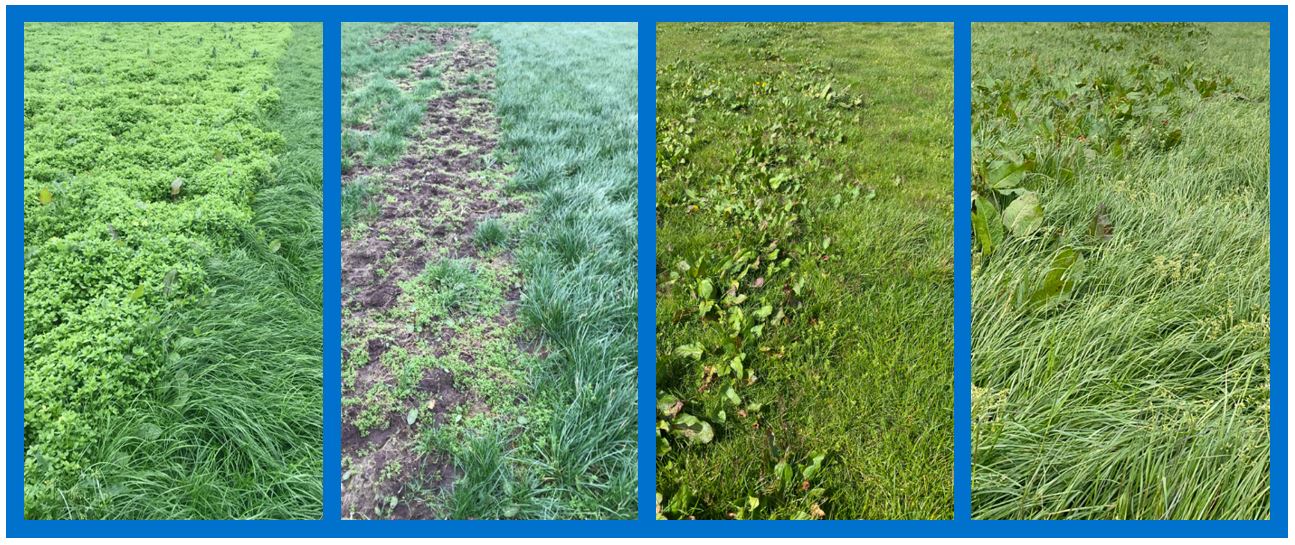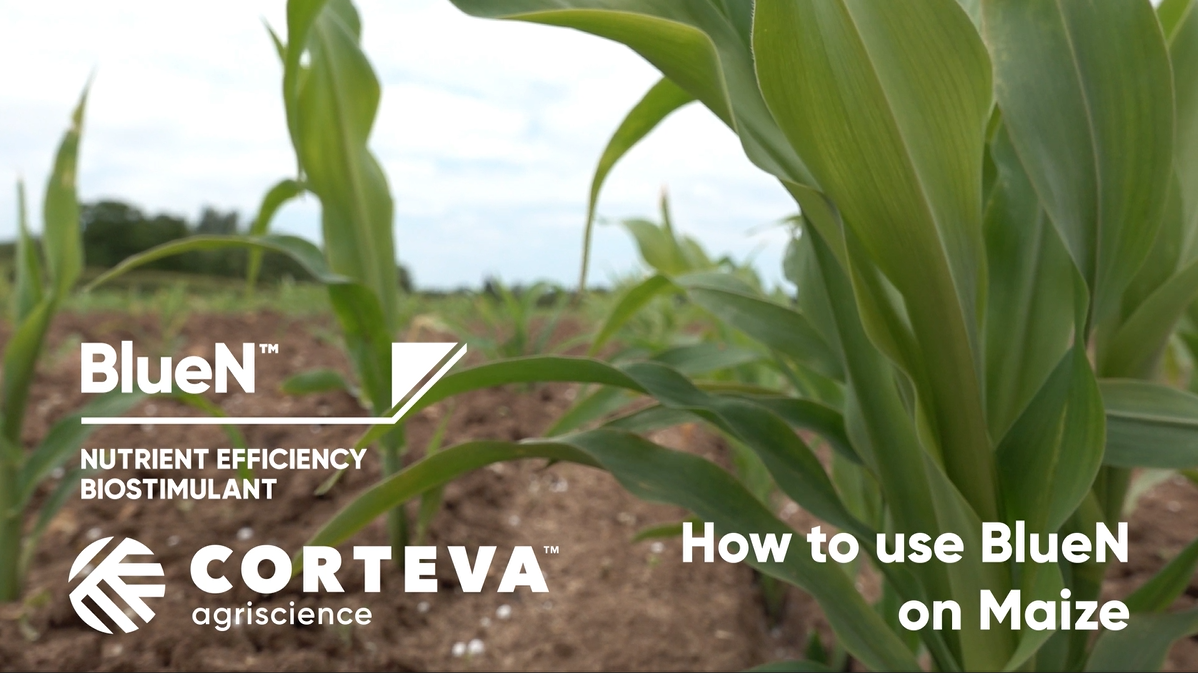|
|
Corteva’s focus on R&D and investment in innovation means an expansion of solutions to advance forage productivity. This includes our expanding biologicals range, four new maize hybrids and two new maize herbicides coming in 2024. We will keep you updated on these and our current product range through this e-newsletter. Ensure you stay connected with our updates by updating your preferences here and feel free to share the link to our sign-up page with people you feel will be interested in this content so they can also be fully informed.
Your feedback is vital in our journey to improve our services and communications. We would like to thank those of you who filled in our Forage Agronomy Update feedback form in December last year. We were thrilled with the positive comments and look forward to making some improvements to our 2024 update based on your suggestions.
|
Early season chickweed control
|
Early spring is the time of year when common chickweed and common mouse-ear begin to emerge and smother grassland. Their growth habit allows them to rapidly colonise any gaps in the sward.
These weeds can be found in established grassland, often in damaged swards, or where slurry injectors open the sward allowing their establishment.
- Their plants can produce up to 1300 seeds.
- It only takes five to six weeks from germination to seed dispersal.
- Their plants are capable of four to five generations a year.
For both common chickweed and common mouse-ear control use Envy®
- Apply from 1st February until the end of November.
- Florasulam, one of the two active ingredients in Envy, allows it to work at cooler temperatures.
- If conditions allow, spray before the chickweed flowers and before it impacts grass growth.
- It has excellent grass safety.
- Rainfast in 2 hours.
- Stock exclusion of just 7 days.
Rates
1.0L/ha in newly sown leys, or 1.5L/ha if the weed spectrum/ weed size is significant.
Chickweed competes aggressively with grass for space, light, water and most importantly nutrients and left uncontrolled can dramatically reduce presence of grass and encourage other weeds to come through when they die back. This time series below shows just that with docks being the successful coloniser.
|

|
NEW maize herbicides: Principal Forte and Dragster
|
Dragster® and Principal® Forte are two newly approved and exciting post-emergence herbicides for use this spring for both forage and grain maize. Both products control a wide range of grass and broad-leaved weeds, are rainfast in 4 hours and have few following crop restrictions.
Dragster and Principal Forte must be applied with an adjuvant that is classified as 95.0% w/w oil (rapeseed triglycerides).
More details will be shared in next month's Forage Agronomy Update.
|

|
Increase maize yields with BlueN
|
BlueNTM is a nutrient efficiency biostimulant for use in a broad range of crops including maize. It contains Methylobacterium symbioticum, a bacteria found in nature, which fixes nitrogen from the air and converts it into usable nitrogen in the plant. BlueN provides a sustainable, supplemental source of nitrogen for the plant, ensuring the plant has access to nitrogen all season long.
|

|
Increase maize yields by 3.6t/ha with BlueN.
A grower conducted trial in the South West of England showed a 3.6t/ha yield increase with a corresponding increase in digestibility (D) values and metabolisable energy (ME). Increases in D values and ME will show improved ruminant performance i.e. live weight gain/animal/day and increased milk productivity/cow/day.
To find out more about BlueN, watch our short video "How to use Nutrient Efficiency Biostimulant BlueN on maize" here.
|

|
PACTS results for 2024/25
|
Have you seen our PACTS® book yet? The latest maize PACTS results were published last month following a full programme of UK and Ireland trials in 2023. PACTS is an abbreviation for ‘Pioneer® Accurate Crop Testing System’ and refers to multi-location on-farm conducted trials that allow us to accurately describe the performance of the Pioneer maize hybrids we offer for sale.
|
Click here to download the 2024/25 edition of PACTS
|

|
New maize hybrids offer something for everyone
|
Every year we improve the genetics of our Pioneer® maize hybrids to ensure we have something to offer for everyone. This season sees the launch of four new maize hybrids alongside existing well-known Pioneer favourites.
The very early maturing P7381 is one of the new hybrids attracting particular attention having produced impressive results in the 2023 PACTS® trials. It showed high dry matter contents of 37.5-38.2% across all sites and good resilience to both the dry conditions of 2022 and cooler temperatures last year.
“I need maize varieties which perform in the unpredictable weather patterns constantly thrown at us in the UK. Varieties like P7381 give me the confidence to deliver results on farm in the strive to produce milk and red meat sustainably from important forages such as maize.” - Alan Lockhart, ForFarmers Forage Specialist
Read the full press release here. To find out more about our new and existing maize hybrids click here or contact your local specialist, see details at the bottom of this email.
Also, take a look at our grain maize topic sheet here to find out more about the benefits of turning to sowing maize for grain production in spring 2024.
|

|
Instinct: lock in Nitrogen to boost maize yields
|
As a crop, maize has traditionally been under-fertilised, and this is largely due to it requiring a significant amount of nitrogen - around half - post flowering. Nitrogen stabilisers slow down the conversion of ammonium to nitrate, preventing nitrogen loss through leaching and denitrification. Trials using Corteva's Instinct® have shown a reduction in leaching of around 50%, and a reduction in denitrification through greenhouse gases of approximately 45%. This means nitrogen is kept in the soil for longer, and for a crop such as maize, this has a significant impact on yields as it is available to the plant when it is needed.
|

|
|
|
If you haven't already, make sure you take a look at our Corteva Forage App. Key features include:
- Easy access to technical support and FAQs
- Optimise weed control with our grassland weed wizard tool
- Decision trees for grassland herbicides and silage inoculants
- Product information including labels, tech sheets, weed lists and how to use
|

|
|
|
|
|
Team Corteva had a great time exhibiting at Dairy Tech 2024 earlier this month. It was great to talk to so many of you about our solutions and hear about your experiences. Thank you to everyone who dropped by the Corteva stand to say hello.
Upcoming events which we will be exhibiting at:
MGA Annual Conference
27 - 28 February, Nottinghamshire
Farm Expo
6 March, Kent
We will keep you updated with upcoming events that we'll be exhibiting at in each edition of the Forage Agronomy Update.
|

|
|
|
|
|
For all enquiries about our maize hybrids, please contact your local Forage Specialist or Forage and Seed Promoter. The contact details of your local contact can be found below.
|

|
For technical enquiries concerning Corteva herbicides, biostimulants and nitrogen stabilisers, please contact the hotline team using the contact details below. Or click here to find the contact details of your local area manager.
|

|
|
|
Q. When can grassland herbicides first start to be applied?
A. Most grassland weeds, such as docks, need to show active growth before a herbicide application is made. Typically, weeds start to grow when temperatures are above 8oC and rising over a number of days. For good control you will want to see sustained active growth. Chickweed however, will grow in cooler conditions, and buttercups and dandelions emerge early and are best treated before they flower. More details on those weeds next month.
Q. What is the ideal water volume to apply grassland herbicides?
A. When applied via flat fan nozzles, water volumes for established grassland can range from 200 litres to 400 litres depending on the volume of grass present. Corteva encourage the use of low drift air inclusion nozzles with an application volume of 200 litres for all situations.
Q. What is the difference between common and mouse ear chickweed?
A. Both species come from the same family: Caryophyllaceae. Common chickweed (Stellaria media) is capable of 4-5 generations per year. It has few hairs and its stems are slender and weak. Mouse-ear chickweed (Cerastium fontanum) has hairy leaves and stalks. The flowers are often bunched together, on short stalks. Its leaf and stalk tend to be thicker than common chickweed. They can also feel sticky.
|